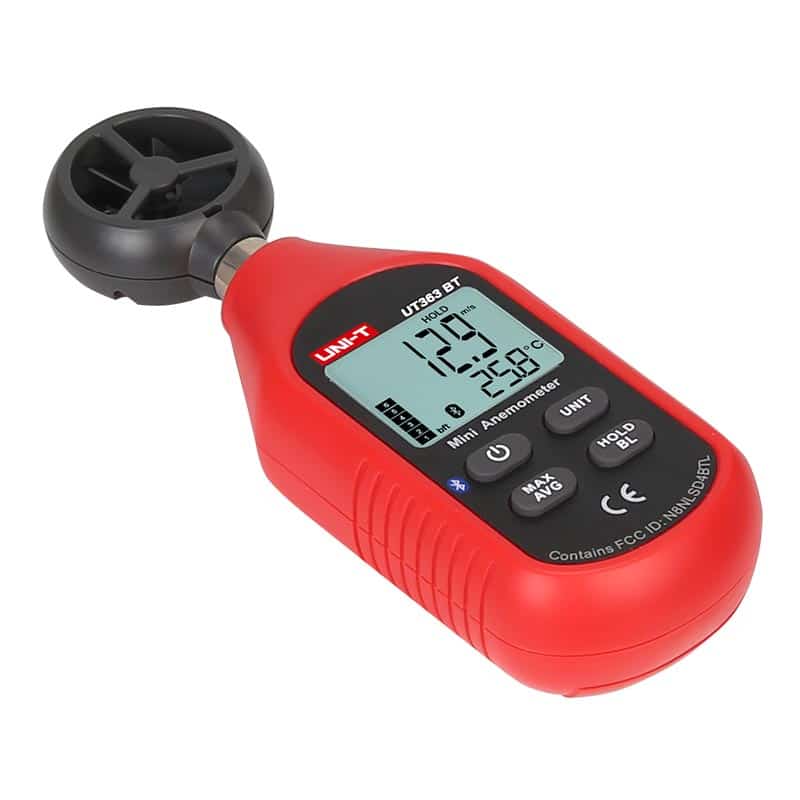How an Anemometer Can Enhance Your Weather Surveillance System
Anemometers Unveiled: Recognizing Their Importance in Environmental Surveillance and Safety Measures
The function of anemometers in ecological monitoring and safety procedures is typically underestimated, yet their importance is undeniable. From weather forecasting to aeronautics safety and security, anemometers play a vital role in providing accurate data that notifies decision-making processes and improves total safety and security.
Background of Anemometers
The advancement of anemometers can be traced back to the old human beings where primary wind determining tools were initial made use of. These very early wind measurement devices laid the foundation for the growth of a lot more innovative anemometers over time. One of the earliest well-known anemometers was the hemispherical cup anemometer designed by Leon Battista Alberti in the 15th century. This layout contained 4 hemispherical cups that collected wind energy, providing a measurement of its intensity based upon the speed of rotation.
Over the years, developments in innovation led to the development of even more contemporary anemometers, including ultrasonic anemometers and laser Doppler anemometers, offering boosted accuracy and performance in gauging wind rate and direction. The history of anemometers showcases an impressive journey of innovation and development in the area of weather forecasting.
Kinds Of Anemometers
Throughout the area of meteorology, numerous kinds of anemometers have been developed to precisely determine wind speed and instructions. Sonic anemometers use ultrasonic signals to determine wind speed and direction properly. Hot-wire anemometers run based on the concept that the cooling impact of wind on a heated cable is proportional to the wind rate.
Applications in Weather Forecasting
Having reviewed the numerous kinds of anemometers utilized in weather forecasting for gauging wind rate and direction, it is vital to explore their sensible applications in the area. Anemometers play a crucial function in weather forecasting by providing accurate and real-time information on wind conditions (anemometer). Meteorologists utilize anemometers to check wind speed and direction to forecast weather patterns, concern cautions for severe weather occasions like tornadoes, typhoons, and tornados, and assess weather for air travel safety and security
In meteorology, anemometers help in recognizing neighborhood and regional wind patterns, which are crucial for anticipating climate adjustments and determining climatic fads. These gadgets are also utilized in research to study microclimates, urban heat islands, and air pollution diffusion. In addition, anemometers are utilized in agriculture to maximize crop management practices, such as find out here now irrigation and pesticide application, based upon wind conditions.
Relevance in Aviation Safety
An essential facet of guaranteeing aeronautics safety depends on the careful tracking of wind conditions making use of anemometers. Anemometers play a critical role in air travel by providing real-time data on wind rate and direction, helping pilots in making notified choices throughout take-off, flight, and touchdown. Solid and unforeseeable winds can substantially influence airplane procedures, making it necessary for aeronautics authorities to count on accurate wind dimensions to ensure the safety of travelers and team.

In the dynamic atmosphere of aviation, where even small adjustments in wind speed and direction can have extensive results, anemometers stand as important devices for promoting safe and Visit This Link protected air travel.
Duty in Environmental Study
Exactly how do anemometers contribute to advancements in environmental research? Anemometers play a vital duty in environmental study by supplying necessary data on wind speed and direction. This details is vital for comprehending different atmospheric processes, such as air contamination dispersion, climate patterns, and climate change. By accurately measuring wind features, anemometers help scientists analyze the activity of pollutants airborne, examine the impact of industrial exhausts, and anticipate the spread of pollutants in the atmosphere.


Verdict
In conclusion, anemometers have played a crucial function in environmental monitoring and security steps. Understanding the relevance of anemometers is important for precisely determining wind speed and direction, which is important for anticipating climate patterns, making certain risk-free aeronautics operations, and conducting ecological research studies.
One of the earliest recognized anemometers was the hemispherical mug anemometer developed by Leon Battista Alberti in the 15th century. Over the years, developments in innovation led to the advancement of more modern anemometers, including check my source ultrasonic anemometers and laser Doppler anemometers, offering boosted accuracy and performance in gauging wind rate and instructions. Hot-wire anemometers run based on the principle that the cooling impact of wind on a warmed cord is symmetrical to the wind rate. Meteorologists use anemometers to keep an eye on wind speed and direction to forecast climate patterns, concern cautions for serious weather occasions like tornados, twisters, and storms, and evaluate climatic conditions for aviation security.
Understanding the value of anemometers is important for properly gauging wind speed and instructions, which is important for forecasting weather condition patterns, ensuring secure aeronautics operations, and conducting ecological researches. (anemometer)